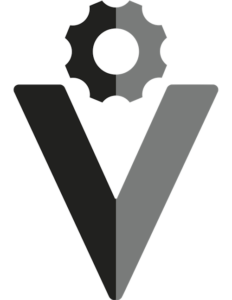How To Measure Undercarriage Wear
Undercarriages represent some of the hardest-working components on a excavator, bulldozer, and crawler loader. Over time, undercarriages can experience significant wear and even damage from daily operations.
Finding wear and damage on your undercarriage involves a visual inspection, as well as several simple tools. First, remove any debris (rocks, hard mud, etc.) caught in the undercarriage, then look for any structural damage or any parts that appear loose.
Check the tracks for cuts or bends in the metal. See if there is enough tension in the tracks. Put something with a straight edge from the front idler to the rear idler and measure the distance between the tracks and the straight edge at the midpoint between the two idlers. There should be only a modest amount of sagging of the tracks. Tracks with severe sag will be obvious to the eye. Some manufacturers write on the inside of the maintenance panel door the number of inches the tracks should sag to achieve the best performance.
Also, make sure the track chain is in its place with no signs of popping off.
Check rollers for damage and flat parts. Check for wetness underneath the rollers, as well as the front idler. Wetness at any of these locations could mean leakage from a roller or idler. Look at the pins and bushings to see if they need to be turned. If the top half of the bushing appears worn, it is time to turn them.
Sprockets are often seen as being strongly correlated with overall undercarriage health. If the sprockets are sharp and look show signs of wear, then more components in the undercarriage probably need attention.
It would be wise to do a visual inspection at the beginning of each shift, as well as doing a thorough inspection.
Next, take out the caliper for measuring the top and bottom rollers. Twist the knob until the tongs touch the sides of the roller at its diameter. Record the measurement.
Pins and bushings are measured in a similar fashion. Slide the tongs of the pin-and-bushing caliper to determine their width. Make note of the measurement.
Measure the width of your track’s shoes with a tape measure and their depth with a depth gauge. Find a spot where a few tracks are level in order to get accurate results. Push the gauge down until it reaches the bottom of the tracks. Rail height is also checked using a depth gauge. Place it across the bottom of the rails and push the gauge up until it touches the bottom of the shoe. Record these measurements.
A smaller depth gauge is required to measure the idler. Place it on the idler and move the gauge until it reaches the outer flange, and then record that measurement.
All these measurements are an indication of wear. By checking the wear percentage chart, you can see how worn (as a percent) the components are.
Wear percentage charts can be found in your machine tech manual or from a preferred undercarriage supplier, such as Pivot. Search for your machine’s rollers, bushings, track, and rail information. If your rollers are four inches in diameter when new, then a roller with a diameter of four inches is at 100% (0% wear); however, that same roller but worn down to three inches is not at 75% (25% wear). The wear percentage chart will outline each component’s values for 0% wear and for the percentage at which point the component should be replaced.
Place the values that you recorded for each component in order to determine the percentage of wear. Then, follow the manufacturer’s directions for repair and/or replacement.
Undercarriages are typically a planned repair, but in the event that you push it past that point, you run the risk of being in the middle of a job, needing a repair and then forced to either have the equipment moved off site and forced to rent equipment to finish the job (all extra costs). So, for healthy machine undercarriages: keep them clean, keep them greased and keep them tensioned.
Share this article
Searching For Heavy Equipment Parts?
We specialize in undercarriage and complete components for excavators, dozers, crawler loaders, and wheel loaders.

Searching For Heavy Equipment Parts?
We specialize in undercarriage and complete components for excavators, dozers, crawler loaders, and wheel loaders.
